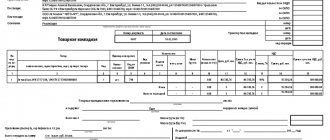First, recall that auxiliary account 00 is a service account. It is found only in accounting programs and is intended to enter opening balances into the program.
When should you enter opening balances into the program? There are only three such cases:
- the organization is new and it is necessary to enter the first accounting entries;
- the organization is already operating, but accounting is done manually (or in another automated program);
- the organization is already operating, but accounting has not been maintained and account balances are unknown (accounting needs to be restored).
In the first case, you do not need to use account 00. To enter all balances, simple correspondence on accounting accounts is used. But in other cases you will need to use correspondence with a subsidiary account.
Balance sheet account 00 “Auxiliary account” is active-passive. The basis for using this account, as for other balance sheet accounts, is the principle of double entry. That is, when entering balances on balance accounts into an automated program, a posting must be made for two accounts.
Let us formulate the basic rules for using account 00:
- if the account for which the initial balances are entered is active, then the balance on it is reflected as a debit, and the auxiliary account 00 is entered as a credit and vice versa;
- if the account for which the balances are entered is active-passive, then the balance on it can be recorded by debit or credit in correspondence with the auxiliary account 00;
- Balances must be entered as of the last date preceding the start date of accounting. For example, if you need to start work on January 1, 2014, then the opening balances should be entered as of December 31, 2013;
- account balances in correspondence with account 00 must be entered in the context of subaccounts and analytical accounts;
- Based on the results of entering initial balances, it is necessary to create a balance sheet.
The correctness of filling out the balance sheet can be checked by checking the sum of the balances for all accounts (from 01 to 99) and for the auxiliary account 00. They must be equal.
Why and how to correctly use the auxiliary account “00”
First, recall that auxiliary account 00 is a service account.
It is found only in accounting programs and is intended to enter opening balances into the program. When should you enter opening balances into the program? There are only three such cases:
- the organization is new and it is necessary to enter the first accounting entries;
- the organization is already operating, but accounting is done manually (or in another automated program);
- the organization is already operating, but accounting has not been maintained and account balances are unknown (accounting needs to be restored).
In the first case, you do not need to use account 00. To enter all balances, simple correspondence on accounting accounts is used. But in other cases you will need to use correspondence with a subsidiary account.
Balance sheet account 00 “Auxiliary account” is active-passive. The basis for using this account, as for other balance sheet accounts, is the principle of double entry. That is, when entering balances on balance accounts into an automated program, a posting must be made for two accounts.
Let us formulate the basic rules for using account 00:
- if the account for which the initial balances are entered is active, then the balance on it is reflected as a debit, and the auxiliary account 00 is entered as a credit and vice versa;
- if the account for which the balances are entered is active-passive, then the balance on it can be recorded by debit or credit in correspondence with the auxiliary account 00;
- Balances must be entered as of the last date preceding the start date of accounting. For example, if you need to start work on January 1, 2014, then the opening balances should be entered as of December 31, 2013;
- account balances in correspondence with account 00 must be entered in the context of subaccounts and analytical accounts;
- Based on the results of entering initial balances, it is necessary to create a balance sheet.
The correctness of filling out the balance sheet can be checked by checking the sum of the balances for all accounts (from 01 to 99) and for the auxiliary account 00. They must be equal.
In order to correctly form account balances, it is necessary to conduct an inventory of property and liabilities as of the date of formation of the initial balances.
We evaluate the authorized capital on the basis of constituent documents and reflect the amount in account 80 “Authorized capital”. We restore the founders' contributions (cash, fixed assets, materials, etc.) on the basis of relevant documents and reflect them in accounts 01 “Fixed assets”, 50 “Cash”, 10 “Materials” and so on.
Account 00 is used only in automated accounting programs and is intended for entering initial balances into the program.
Based on bank statements and cash book data, it is possible to determine the balance of funds in banks (the opening balance in accounts 51 “Cash Accounts” and 52 “Currency Accounts”) and the organization’s cash desk (the opening balance in account 50 “Cash Office”). If an organization has several current accounts, then the balances on bank statements must be added up.
Indicators for credit and loan accounts 66 “Short-term loans and borrowings”, 67 “Long-term loans and borrowings” can be confirmed if you reconcile settlements with debtors and creditors. In this case, it is necessary to determine data both on the amount of the principal debt and on the amount of interest accrued at the end of 2013.
The balance values at the end of the day on December 31, 2013 and at the beginning of the day on January 1, 2014 are the same.
Using reconciliation reports, information about the status of settlements with counterparties is restored. For each counterparty, receivables and payables are generated (account balances 60 “Settlements with suppliers and contractors”, 62 “Settlements with buyers and customers”, 76 “Settlements with various debtors and creditors”).
Here is a list of documents with which you can determine the amount of receivables and payables:
| Types of debt | Account correspondence | Documentation | |
| DEBIT | CREDIT | ||
| For advances issued for the supply of goods | 60.02 | 00 | Payment orders for the transfer of money to sellers (suppliers), incoming invoices and acts |
| By goods sold to customers | 62.01 | 00 | Bank statements, PKOs or cash receipts indicating the receipt of money from customers, outgoing invoices and acts |
| For loans issued | 76, 73 | 76, 73 | Loan agreements in which you act as a lender, bank statements, PKOs and cash register checks indicating payment of debt and interest |
| For issued accountable amounts | 71 | 00 | Expense cash orders and advance reports |
| For goods received from suppliers | 00 | 60.01 | Payment orders for the transfer of money to sellers (suppliers), incoming invoices and acts |
| For advances received from buyers | 00 | 62.02 | Bank statements, PKOs or cash receipts indicating the receipt of money from customers, outgoing invoices and acts |
| For loans received | 00 | 66, 67 | Loan agreements, payment orders for payment of debt and interest |
| To employees regarding the payment of wages, benefits and vacation pay | 00 | 70 | Payroll and payslips, sick leaves, vacation applications |
| Before extra-budgetary funds | 00 | 69 |
Enter the site
Thank you.








